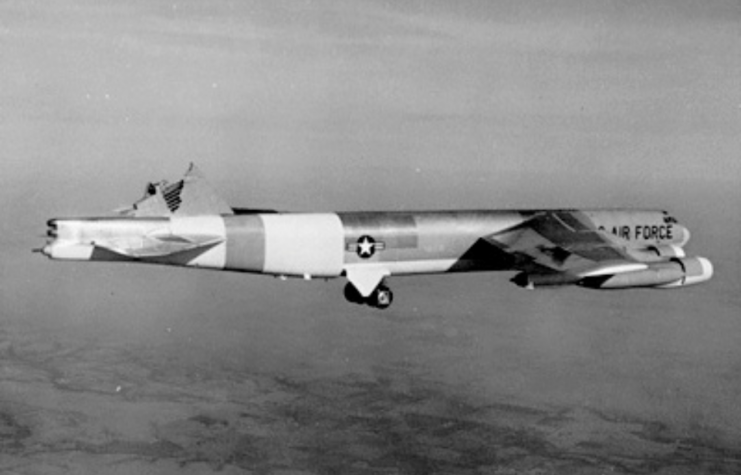
In January 1964, a Boeing B-52H Stratofortress embarked on an eight-hour flight load survey to test buffeting turbulence effects at low-levels. When this turbulence became too much, the bomber climbed to a higher altitude, where disaster struck. Missing its tail and in what should have been a deadly situation, the B-52H and its crew survived.
Despite having the makings of a horrible disaster, this incident showcased the bomber’s design and the skill of the men onboard.
A routine test flight

After the B-52H Stratofortress embarked on its flight from Wichita, Kansas to the Rocky Mountains, its crew began their test, which included 10-minute runs at 280, 350 and 400 knots at 500 feet. The first part of the flight was successful. However, when the bomber flew over Wagon Mount, New Mexico, heavy turbulence was determined to be on the tail of the B-52H.
Deciding it was safer to abandon the low-level testing, the aircraft climbed to 14,000 feet. The test continued, as the mountain range also increased in altitude. Near Aguilar, Colorado, the B-52H was approximately 1,000 feet above and to the right of the mountains. As it increased its speed to 350 knots, heavy turbulence was, again, encountered, which lasted only nine seconds.
Being struck by this turbulence, the B-52H’s nose pitched up and the bomber banked to the left. It then rapidly rolled to the right. This resulted in the vertical stabilizer being almost entirely torn off – but the crew didn’t yet know this. Initially, they’d prepared to abandon the aircraft, before discovering they still had some control over it.
Boeing B-52H Stratofortress flying without a tail

The B-52H Stratofortress was brought under marginal control, with the airbrakes slowing the bomber down and a forward center of gravity being created with a fuel transfer. The crew then called for help. Test pilot Dale Felix soon arrived in a North American F-100 and, after surveying the damage, told the crew what had happened.
The pilot manning the B-52H, Charles “Chuck” Fisher, recalled saying, “We’ve slowed down to 220 knots, we’re stable, and I’m going to handle it pretty carefully.” Felix then told him, “That’s a good idea. All of your rudder and most of your vertical fin are gone.” The crew could hardly believe it. After what must have felt like forever, Fisher said, “Don’t I even have 50 percent?” Felix responded, “No, you don’t have 50 percent.”
Approximately 83-85 percent of the vertical stabilizer had been torn off; essentially, the B-52H was flying without a tail.
To help stabilize the bomber, the rear landing gear was lowered. Its crew then began flying back to Wichita. They decided, after testing speeds between 200-220 knots, that 210 were the best for their situation, and they maintained an altitude of 12,000 feet.
Poor weather at Wichita meant it would be safer to change course to Blytheville Air Force Base, Arkansas. Upon their approach, the wingtip gears were lowered first, followed by the forward landing gear. The B-52H then descended to 10,000 feet at 160 knots. The crew maintained this reduced speed for the landing, which was completed successfully.
Aftermath of the incident
The B-52H Stratofortress’ vertical stabilizer is large and weighs roughly 2,000 pounds, and the fact the bomber could fly for five hours without its tail is incredibly impressive. The incident showcased the dangers of intense turbulence, but also highlighted the aircraft’s durability and the skill and training of its crew, who performed admirably.
The B-52 went on to see service in a number of conflicts, and since being introduced into the US Air Force in 1955 has remained in service. The current plan is to keep it active until the 2050s, meaning it’ll have spent a century in the sky.